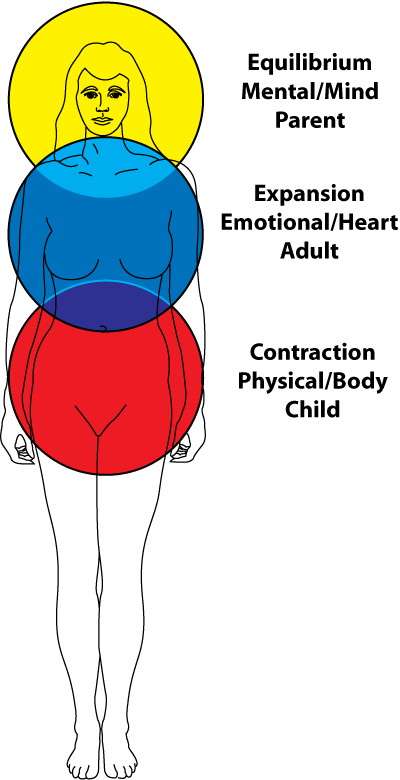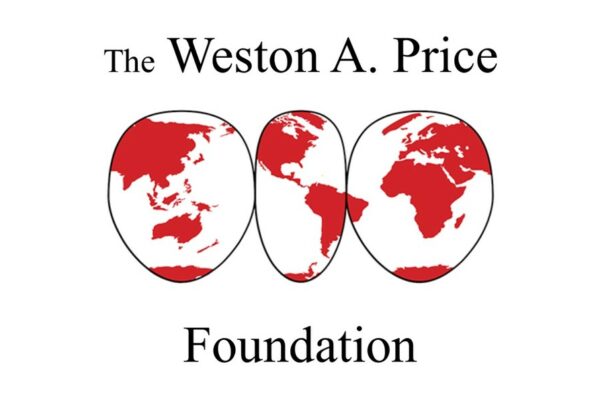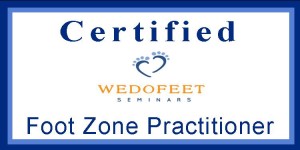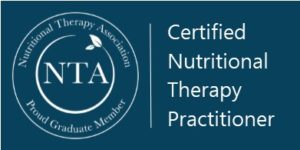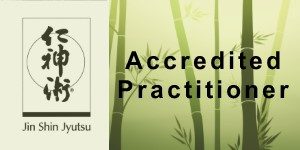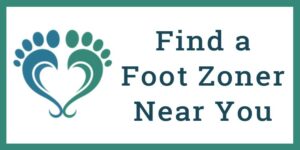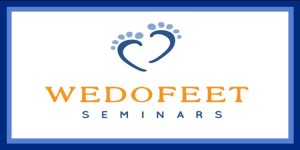This is Part 2 of a 6-Part guest post series on Emotional Anatomy by Steven Horne.
I first met Steven at the LDS Holistic Living Conference where he was teaching a class on herbal remedies. His class was completely full and after hearing him teach I understood why. I recently participated in a free preview of Steven’s Emotional Anatomy webinar and following the webinar contacted Steven to see if he would be willing to submit a guest post on the topic of Emotional Anatomy. I am grateful and humbled that he accepted.
Steven is offering the complete, seven-session Emotional Anatomy Webinar for only $127. The complete webinar goes into greater detail about the various types of emotional wounds and tools you can use to help people heal from them. On his Tree of Light Publishing website, you’ll also find a free preview class that explains the entire emotional map he uses and his technique for healing emotional wounds. I hope you enjoy the following Emotional Anatomy Overview by Steven Horne.
The structure of our body reveals a lot about what is going on inside of us emotionally. In fact, it reveals more about who we really are inside than our words. Often what we think we are like in our head isn’t true, but what is going on in our body is very real. So, if we are willing to take an honest, hard look at ourselves, we can learn a lot about our real emotions by looking at our body. In fact, the older we get, the more our body reveals our personality.
If you look at older people, it’s easy to read their lifetime emotional habits. A person who habitually frowns develops lines in their face that mirror that give them a perpetual “sour” look. In contrast, a person who has tended to be postive and happy will have lines by their eyes and mouth that demonstrate their typically joyful nature.
To understand the concept of emotional anatomy, we first need to understand the relationship between muscles, posture and movement. Muscle groups occur in pairs. These pairs of mucles are like the lines on either side of a tent. When the tension is even on both sides, the tent is upright. The bones are like the tent poles and the muscles are like the lines of the tent. When the tension on both muscle groups is balanced, the bones are held in proper alignment and there is a lack of rigidity and pain in our movements. When one muscle group becomes overly tense, it pulls structure out of alignment, stretching the opposite muscle groups. This causes imbalances in posture, which inhibit movement and cause pain and tension.
Children and wild animals live in a state of grace. This is demonstrated by the gracefulness and freedom of their movements. As we aquire various emotional wounds, stresses and tensions, the body loses its grace. We no longer flow with life. We are tense and our movements lack gracefullness. With knowledge and experience one can “read” this tension in the body and understand the nature of a persons stresses and wounds.
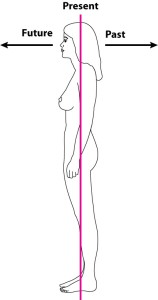 A complete discussion of our “emotional anatomy” is too broad to discuss in a blog, but here are the basics. The alignment of front and back deals with our past, present and future. The past is behind us and relates to the back. The future is ahead of us and relates to the front of the body. Most people lean forward as if they are racing into the future carrying a load of unresolved issues from their past on their back. This places strain on the muscles in the back, which are forced to carry the weight of the body against gravity. Standing erect front to back helps us stay present and eases back pain. It also opens up “space” for our abdominal organs, and our heart and lungs, which improves their function.
A complete discussion of our “emotional anatomy” is too broad to discuss in a blog, but here are the basics. The alignment of front and back deals with our past, present and future. The past is behind us and relates to the back. The future is ahead of us and relates to the front of the body. Most people lean forward as if they are racing into the future carrying a load of unresolved issues from their past on their back. This places strain on the muscles in the back, which are forced to carry the weight of the body against gravity. Standing erect front to back helps us stay present and eases back pain. It also opens up “space” for our abdominal organs, and our heart and lungs, which improves their function.
 There is a similar relationship between the two sides of the body. Most people in our culture tend to put most of their weight on their left leg. This is because our culture is predominantly “left-brained.” The left side of the brain is the logical, analytical side and the right side of the brain is the intuitive, creative side. The left side of the brain controls the right side of the body, so the right side of the body becomes more active than the left. This causes a person to stand still on the left leg, which compresses it, lengthening the right leg and throwing the alignment of the body out of balance from side to side.
There is a similar relationship between the two sides of the body. Most people in our culture tend to put most of their weight on their left leg. This is because our culture is predominantly “left-brained.” The left side of the brain is the logical, analytical side and the right side of the brain is the intuitive, creative side. The left side of the brain controls the right side of the body, so the right side of the body becomes more active than the left. This causes a person to stand still on the left leg, which compresses it, lengthening the right leg and throwing the alignment of the body out of balance from side to side.
 Besides the alignment from front to back, and the alignment right to left, there is also a “balance” from top to bottom. Looking at the body vertically we can see three “zones” or “cavities” that represent the three aspects of our nature—mind, spirit and body. At the top is the head, which houses the skull which holds our brain. Most of our senses are also located in this area (sight, hearing, smell and taste). This is the mental world of our nature.
Besides the alignment from front to back, and the alignment right to left, there is also a “balance” from top to bottom. Looking at the body vertically we can see three “zones” or “cavities” that represent the three aspects of our nature—mind, spirit and body. At the top is the head, which houses the skull which holds our brain. Most of our senses are also located in this area (sight, hearing, smell and taste). This is the mental world of our nature.
Beneath this is the chest cavity. This houses the heart and lungs. This is the emotional (feeling) world of our nature and is also symbolic of our spiritual nature as the lungs house the “breath of life.” To further illustrate the spiritual nature of this area, I’d like to point out that the “still, small voice” of spirit is typically heard in the heart, not in the head.
Finally, we have the abdominal cavity, which houses the stomach, liver, pancreas and intestines. These are the organs of digestion and represent our physical or animal nature, which includes gut instincts.
Tension held in any one of these zones is indicative of blockages in that area of our being. For example, hardness of heart is scripturally used as a metaphor for those who are unable to listen to and follow the spirit, but might this also be why men’s and women’s hearts are literally “failing” them due to hardening of the arteries?
Likewise, tension in the neck may occur because we’re too “top heavy.” Our societal obsession with thinking puts too much energy in our head, which strains our neck. The scriptures associate being “stiff-necked” with being proud.
Our language is filled with references that link certain emotional energies and qualities of personality with various organs and body parts. In my experience, many of these connects are real. Being “anal retentive” actually contributes to constipation. Being fearful will weaken the knees and give us “no legs to stand on.” Holding onto the “gall of bitterness” may be a contributing factor in the formation of gallstones and so forth.
Our body, mind and spirit are linked together. They operate as one unit. Our body affects how we think and feel, which is why we are supposed to take good care of this “temple” for our spirit and intellegence. However, what we think and feel is also affecting our body. This is why we can use the body as an indicator of where we might need to heal what is in our hearts and minds. This is why there is such a thing as emotional anatomy.
Look forward to Part 3 of Emotional Anatomy coming next week.
Steven Horne is professional member and recent past president of the American Herbalists Guild (AHG) and a professional member of the International Iridology Practitioner’s Association (IIPA). He has also served on the board of directors of both organizations. An herbalist, natural health teacher, author, and consultant, he is a popular speaker and students find what he teaches is practical and easy to understand and apply. Steven is the author of numerous books and course on natural healing. He has been a consultant and product formulator for several herb companies and the founder Tree of Light Publishing, an educational organization dedicated to helping people to heal themselves on all levels. Recently he started the School of Modern Herbal Medicine, which is dedicated to “excellence in herbal education.” He also offers personal health consultations through ABC Herbs in St. George, UT.
Other articles in this series include:
- Emotional Anatomy – Introduction
- Emotional Anatomy – The Physical World
- Emotional Anatomy – The Heart World
- Emotional Anatomy – The Mental World
- Emotional Anatomy – Conclusion

